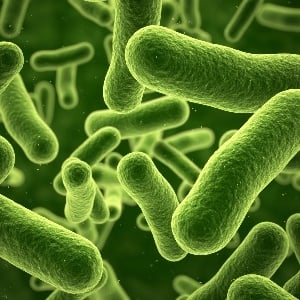
Your immune system protects you against several different attackers - these include viruses, bacteria, toxins, parasites and fungi. Get real info here.
Viruses
Viruses are much smaller than bacteria and cannot reproduce outside living cells.
They need a host, such as a human or an animal or a plant. Airborne viruses are spread by sneezing, coughing, etc; while others, like HIV, need specific contact – and they can lie in wait for a host to come along – for instance, on door handles.
All of us have at some time been host to a virus – colds, flu, the measles and chicken pox are all caused by viruses. Like bacteria, they can enter our bodies through a cut or wound or by inhalation, eating and drinking. Once inside, they invade a host cell and then start reproducing, and invading other cells.
Antibiotics cannot cure viral infections – that’s why there still is no cure for the common cold. Antibiotics can only be used to treat secondary bacterial infections that are the result of the viral infection, e.g. the flu virus can ultimately lead to a lung infection, which will respond to antibiotics.
Bacteria
Bacteria are very small unicellular organisms (you cannot see them with the naked eye) that can cause disease in all living creatures – but that are also essential for life.
They are in the soil, in the air, in people, in plants. They can reproduce outside of living cells.
Desirable bacteria include the flora in your digestive tract, and those bacteria used to make cheese and yoghurt and beer.
Dangerous bacteria can enter your body through a cut (you can get tetanus from this), through inhalation (such as when you get bacterial pneumonia), or when you eat or drinking something which contains the bacteria (drinking infected water can give you cholera, for instance). Their effect is to cause diseases and infections, to destroy tissue in the body, and/or produce toxins which have similar effects.
We use antibiotics to kill bacterial infections. They’re effective unless they’re abused, in which case bacteria can mutate to become drug-resistant. A good example of this is the drug-resistant tuberculosis now found in South Africa.
Parasitic organisms
Parasites are organisms that live on or inside another living thing, and they place a great strain on the immune system – in a parasitic relationship, one organism benefits, one is harmed. The plant or animal on which a parasite lives, is called the host.
Some parasites live inside the body of the host and some on the outside.
To get in, parasite eggs are eaten by the host in food: tapeworm eggs, for example, famously lurk in uncooked pork. From there they make their way to the digestive tract.
External parasites, such as leeches and lice attach themselves to the skin. Not all external parasites are visible to the naked eye – for instance the one that causes scabies only alerts the host when he/she starts itching.
Toxins
Toxins are poisonous substances produced by living cells or organisms.
They are usually either deposited under the skin by means of a bite or a sting, or they are ingested. A spider bite, for instance, delivers a mild toxin, and that red, itchy bump is your immune system diverting resources to neutralise it; snake venom can be toxic your system cannot survive it.
Toxins are also found in foods, like that produced by the bacterium Clostridium botulinum, which thrives in improperly preserved foods. It affects the nervous system and could lead to heart and lung failure. Toxins that have this effect, are called neurotoxins.
There are two other ways in which toxins can kill – haemotoxins target and destroy your red blood cells, and necrotoxins kill tissue (necrotising fasciitis, the flesh-eating bacteria).
Fungi
Fungi are plant-like organisms found in the soil, air, water, plants and animals – in fact, all places that have sufficient moisture. They are unable to produce their own food and feed off other things, mostly dead organic matter. Mildew, mushrooms, yeast and mould are all examples of fungi. They are used extensively in the production of some our basic foodstuffs, such as bread, cheese and beer. Some fungi are parasitic and can invade living organisms. These can cause disease and sometimes death. Thrush infections are fungal; and so is athlete’s foot.
- (Susan Erasmus, Health24, April 2007)




 Publications
Publications
 Partners
Partners










